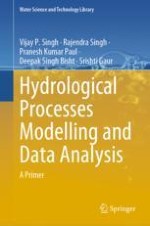This book provides a state-of-the-art overview of the concepts and methodologies of data and modelling-driven hydrological analyses and their wide range of practical applications. The book is driven by the realisation that science, technology, engineering, and mathematics (STEM) concepts are essential in engineering hydrology to produce well-trained hydrologists. Such hydrologists will be equipped to face future societal challenges that require enhanced information and communication technology tools and integration of technical and non-technical areas. The book contains 12 chapters that introduce the principles of hydrological data analysis and highlight the current and emerging tools and techniques for analysing hydrologic data. The book describes the types of data typically used in hydrological analyses. It highlights the revolutionary technological advancements made toward hydrological data collection, including the use of drones and smartphones. The foremost objective of the book is to present the hydrological data analysis procedures. It explains the steps involved in data analysis for easy understanding of the reader, including students and professionals. This book presents case studies that demonstrate step-by-step procedures involved in typical analysis problems and may guide students and professionals in planning and executing steps to analyse the problem at hand. Case study examples will guide them to understand the intricacies of hydrological data analysis. It provides the readers with a complete package to enrich their understanding of the hydrological data analysis tools and techniques. Subsequently, as well-trained hydrologists, they could execute their learning to meet any specific grand challenge of the twenty-first century.
